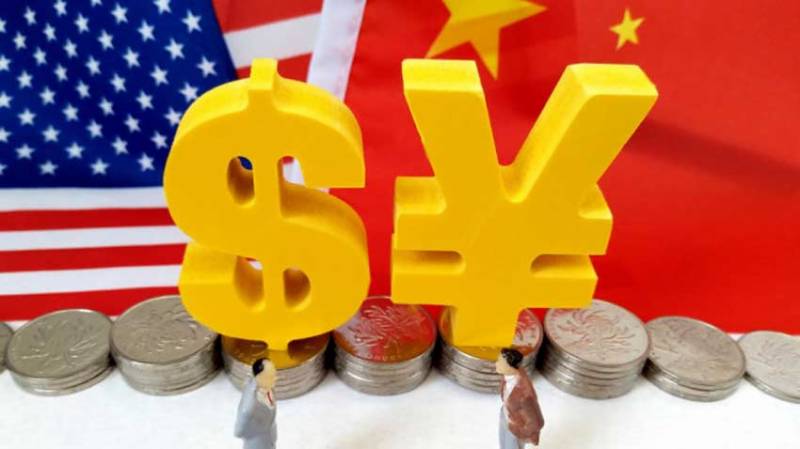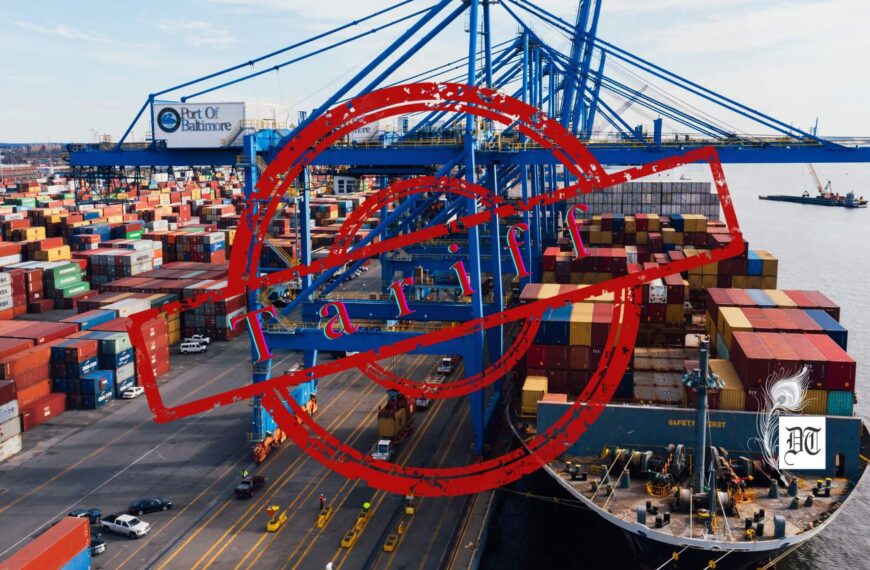The trade negotiations between the two countries ended last week, with China declaring its honest intent to increase US imports and the world breathed a sigh of relief that the trade war was averted. But no roadmap of the strategic measures to reduce the trade deficit was drawn up. A report, for Different Truths.
After China clamoured for retaliation against USA’s tariff imposition, almost threatening of a global trade war, it decided to import substantially more from the USA. The trade negotiations between the two countries ended last week, with China declaring its honest intent to increase US imports and the world breathed a sigh of relief that the trade war was averted.
But no roadmap of the strategic measures to reduce the trade deficit was drawn up. It only amounted to expressing the good intent.US Treasury Secretary Steven Munch in said: “We are putting the trade war on hold”.
According to Chinese Vice Premier Liu He – the leader of the Chinese delegation to the negotiation – both sides agreed to avoid trade wars and take measures to substantially reduce the trade deficit with China and strengthen cooperation on protection of intellectual property.
The significant achievement of the negotiation was that the conflict turned into hobnobbing “China has shown its willingness to address trade imbalances, while also being honest to it and USA accepted it”, according to Wei Jianguo, Deputy Director of China Centre for International Economic Exchange and a former Chinese trade official.
But against the historical political adverse relations between the two countries and the yawning gap of trade deficits, it is doubtful how only the intent will help achieve the desired result. Ahead of the talks, US officials insisted that China pledge to reduce the trade deficit by the US $ 200 billion by 2020. The Joint Statement did not, however, make any such reference. To this end, the main task for reducing trade deficit remained unworked.
Does it mean the end of US – China trade war in near term? Against the backdrop of China’s economic and political expansionism through BRI (Belt and Road Initiative) and the historical political adversity with the USA, only the intent is not going to help. The USA is the biggest importer of Chinese goods and not vice versa. The size of the economic interdependence and the global outreach of both countries will determine the scope of measures to curtail the trade deficit.
China is the biggest drag on the US trade deficit. The USA plunged into yawning deficit after China emerged as its biggest trade partner. Over 47 percent of US trade deficit was attributed to Chinese dumping of goods in 2017. Trade deficit in goods surged from about US $ 318 billion in 2013 to US $ 375 billion in 2017.
The USA’s major items of imports from China are electrical machinery, machinery, furniture and bedding, toys and sports, and footwear. They accounted for 63.5 percent of USA’s imports from China in 2016 and in value terms they were US $ 294 billion. Against these, there were five major items of USA’s exports to China, which accounted for 55 percent of USA’s exports to China in 2016 and in value terms, they were US $64 billion. The Items were soybean, aircraft, electrical machinery, machinery and vehicles.
Given the wide disparity, if the trade deficit is to be reduced by US $ 200 billion by 2020, as demanded by US, China has to increase imports of these five major items from the USA by three-fold by 2020. This will be an uphill task for China.
Does China really have the appetite to absorb such large imports from the USA within the stipulated time period? China is the hub for a global workshop. It imports raw materials and intermediates and produces consumption goods for export. China’s major items of imports from the world are crude oil, electronic integrated circuits, iron ore, coal and vehicles. Given this basket of global imports, it is an arduous task for China to increase imports from the USA and offset the wide trade deficit. The anomaly of the trade pattern will shadow the negotiations for strategic measures to cut trade deficit.
Failure to find amicable solutions to the trade deficit problem will force the US to entangle China in a currency war. Here one may recall USA’s currency war against Japan in the end-eighties, when Tokyo failed to curtail trade deficit with the USA. To drub cheap Japanese exports, the coterie of five developed nations, initiated by the USA, signed an agreement to appreciate Japanese yen in relation to US dollar in Plaza Hotel in New York in September 1985. The agreement made Japanese exports costlier.
Till 1985, Japan was the main lever to augment USA trade deficit. It accounted for 37 percent of US trade deficit. To thwart the impact of Japanese yen appreciation and to sustain their exports, the benchmark for Japanese corporate growth, Japanese companies shifted their plants to South East Asian countries.
India is also engulfed by the wide trade deficit, with China emerging as the biggest trade partner. Despite using several WTO weapons, like anti-dumping duties, safeguard measures, China remains the main cause dragging India into the wide trade deficit. Given the situation, should India take a lead in siding with the USA?
There has been a turnaround in India- China economic relation since Modi came to power despite the border tiff. Business interests preceded the border tussle. Unlike his predecessors, Modi tried to woo Chinese investment to uptick the Make in India initiative and generate employment. Eventually, these yielded results. Chinese companies gushed with investment in India. Six top brand Chinese smartphone makers (Xiaomi, Oppo, Oneplus, Gionee, Vivo, and Huawei) established their manufacturing facilities in India.
Given the Chinese penchant to invest in India, Sino-India relation has made a strategic shift from politically dominated issues to business relations. In this context, it is better for India to lie low in USA-China trade war.
Subrata Majumder
©IPA Service
Photo from the Internet





 By
By


 By
By